In the aftermath of the Japanese
occupation of Korea which ended with Japan's defeat in
World War II in 1945, Korea was divided at the 38th
parallel in accordance with a United Nations arrangement,
to be administered by the Soviet Union in the north and
the United States in the south. The history of North Korea
formally begins with the establishment of the Democratic
People's Republic in 1948.
Division
of Korea
In August 1945, the Soviet Army
established a Soviet Civil Authority to rule the country
until a domestic regime, friendly to the USSR, could be
established. The country was governed by the Provisional
People's Committee for North Korea through 1948. After the
Soviet forces' departure in 1948, the main agenda in the
following years was unification of Korea from both sides
until the consolidation of Syngman Rhee regime in the
South with American military support and the suppression
of the October 1948 insurrection ended hopes that the
country could be reunified by way of Communist revolution
in the South. In 1949, a military intervention into South
Korea was considered by the Northern regime but failed to
receive support from the Soviet Union, which had played a
key role in the establishment of the country.
The withdrawal of most United States
forces from the South in June dramatically weakened the
Southern regime and encouraged Kim Il-sung to re-think an
invasion plan against the South. The idea itself was first
rejected by Joseph Stalin but with the development of
Soviet nuclear weapons, Mao Zedong's victory in China and
the Chinese indication that it would send troops and other
support to North Korea, Stalin approved an invasion which
led to the Korean War.
Korean
War
l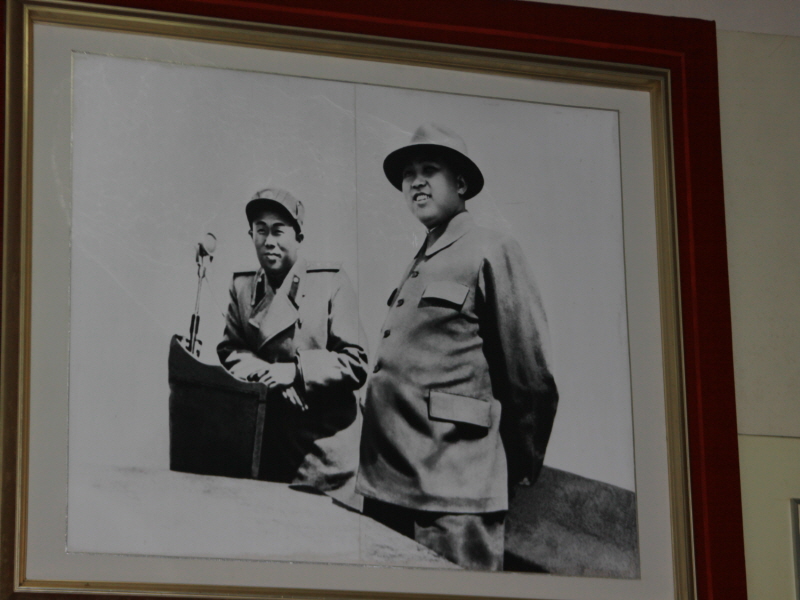
Kim Il Sung
North Korean war monument in
Pyongyang.
Korean War Armistice Agreement
The Korean War was a war between
North Korea and South Korea with major hostilities
beginning on June 25, 1950, pausing with an armistice
signed on July 27, 1953. The conflict arose from the
division of Korea by the UN and the attempts of the two
Korean powers to reunify Korea under their respective
governments. The division led to full scale civil war with
a cost of more than 2 million civilians and soldiers from
both sides. The period immediately before the war was
marked by escalating border conflicts at the 38th parallel
and attempts to negotiate elections for the entirety of
Korea.
These negotiations ended when the
military of North Korea invaded the South on June 25,
1950. Under the aegis of the United Nations, nations
allied with the United States intervened on behalf of
South Korea. After rapid advances in a South Korean
counterattack, North-allied Chinese forces intervened on
behalf of North Korea, shifting the balance of the war and
ultimately leading to an armistice that approximately
restored the original boundaries between North and South
Korea.
While some have referred to the
conflict as a civil war, there were many other factors at
play. The Korean War was also the first armed
confrontation of the Cold War and set the standard for
many later conflicts. It created the idea of a proxy war,
where the two superpowers would fight in another country,
forcing the people in that nation to suffer the bulk of
the destruction and death involved in a war between such
large nations. The superpowers avoided descending into an
all-out war with one another, as well as the mutual use of
nuclear weapons. It also expanded the Cold War, which to
that point had mostly been concerned with Europe. A
heavily guarded on the 38th parallel continues to
divide the peninsula today with anti-Communist and
anti-North Korea sentiment still remaining in South Korea.
Since the ceasefire of the Korean
War in 1953 the relations between the North Korean
government and South Korea, the European Union, Canada,
the United States, and Japan have remained tense. Fighting
was halted in the ceasefire, but both Koreas are still
technically at war. Both
North and South Korea signed the June 15th North-South
Joint Declaration in 2000, in which both sides made
promises to seek out a peaceful reunification.
Additionally, on October 4, 2007, the leaders of North and
South Korea pledged to hold summit talks to officially
declare the war over and reaffirmed the principle of
mutual non-aggression.
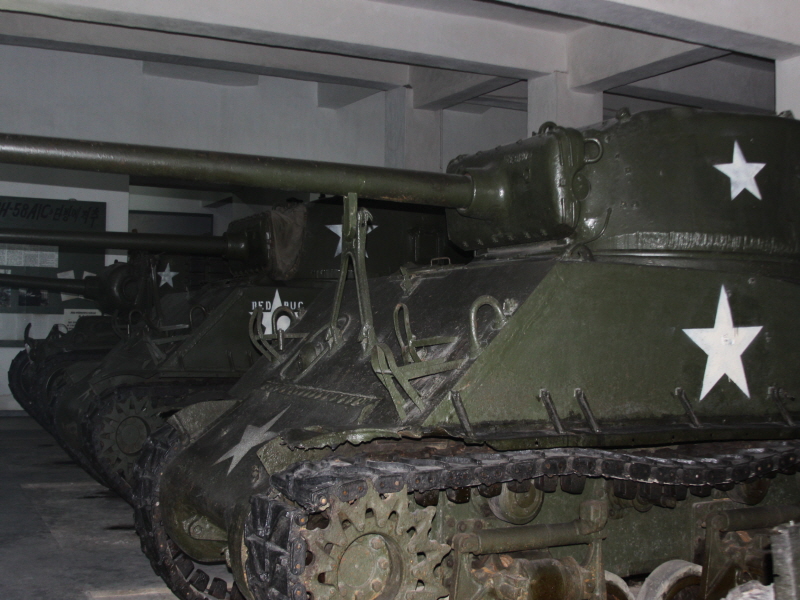
Korea War Museum in Pyongyang
(US Tanks)
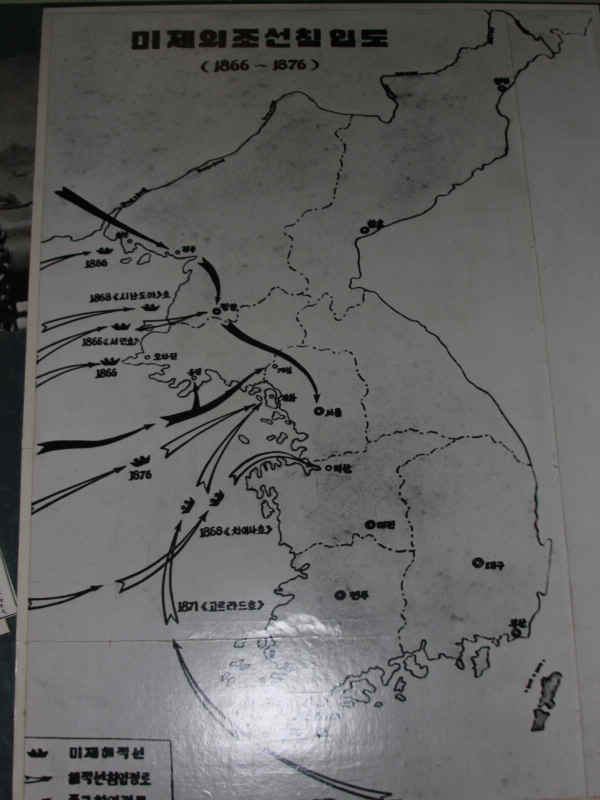
The
Korean War (Facts
from South Korea)
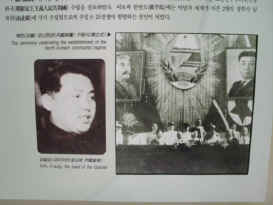
Under
such circumstances early on the Sunday morning of June 25,
1950, without any warning or declaration of war, North
Korean troops invaded the unprepared South across 38th
parallel. It was a well-prepared, all-out attack. South
Korea's troops fought bravely, but proved no match for the
heavily armed Communists and the Russian T-3 tanks, who
were not checked until they reached the Naktonggang river
near Taegu.
The
Republic of Korea appealed to the United Nations. In
response, the Security Council passed a resolution
ordering the Communists to withdraw to the 38th parallel
and encouraged all member countries to give military
support to the Republic. U.S. troops soon began to arrive,
and were subsequently 1joined by those from 15 other
nations: Australia, New Zealand, Britain, France, Canada,
South Africa, Turkey, Thailand, Greece, the Netherlands,
Ethiopia, Colombia, the Philippines, Belgium, and
Luxemburg. The three Scandinavian countries sent hospitals
along with medical personnel.
Under
the command of Gen. Douglas MacArthur, the Allied forces
began to take the initiative, and after a surprise landing
at Inch'aon, pushed the Communists out of South Korea and
advanced into the North.
But
in October the Communist Chinese intervened, throwing such
large numbers of troops into battle that the U.N. forces
were forced to retreat. Seoul once again fell into
Communist hands on January 4, 1951. The U.N. forces
regrouped and mounted a counterattack, retaking Seoul on
March 12. A stalemate was reached roughly in the area
along the 38th parallel, where the conflict had begun.
At
this point the Soviet Union called for truce negotiations,
which finally began at Kaesong in July of 1951, and were
transferred to P'anmunjom in November that year. The talks
dragged on for two years before an armistice agreement was
reached on July 27, 1953.
Back
to Top
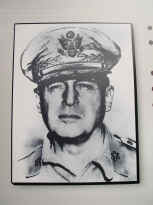
Democratic
Revolution
In
the aftermath of the Korean War, the country was beset
with many problems - economic, social and political. The
old patriot, Syngman Rhee, unable to see that he had
outlived his usefulness, clung tenaciously to power. This
refusal on the part of Rhee and his associates to let
democratic processes take their normal course was at least
partly responsible for the social and political unrest
that followed the war.
Social
disorder and hostility to the government complicated the
already staggering problems created by the war. There were
many thousands of war widows, more than 100,000 orphans,
and tens of thousands of unemployed, whose ranks were
swelled by farmers leaving their land to seek work in the
cities. Exact statistics are not available, but in 1961 it
was estimated that there were about 279,000 unemployed, of
whom 72,000 were university graduates, and 51,000
discharged soldiers and laid-off workers. This provided a
powder keg of anger and resentment that waited only for a
spark to set it off.
The
spark was provided by President Rhee and the Liberal Party
in the course of the elections of 1960. Realizing its own
unpopularity, the ruling regime used every means, legal or
illegal, to rig the elections in its favor. Demonstrations
broke out almost at once, especially among students.
Protesting against government interference in schools,
students rose up in Taegu on February 28, 1960. On March
15, election day, students demonstrated against the
election, and police subsequently fired into the crowds.
In early April, the discovery at Masan of the body of a
student who had been killed by police was followed by a
riot.
The
most serious demonstrations were in Seoul. Responding to
the Masan affair, practically all of the students in the
capital poured into the streets. Again police fired on
them as they neared the presidential residence and there
was bloodshed. Martial law was imposed and troops
dispersed the crowds.
Rhee
had no choice but to step down. His desire for power had
overcome his patriotism in the end. The students had led
the people into the first successful democratic revolution
in Korea's history, showing that Korean democracy was
alive and healthy.
On
July 15, 1960, an amendment to the Constitution was
adopted by the incumbent Assembly providing for a cabinet
system of government with a bicameral legislature. At the
same time, the two houses of the newly elected Assembly in
a joint session elected Yun Po-sun President of the Second
Republic, and he was sworn in on August 15. President Yun
nominated Dr. Chang Myon (John M. Chang) as Prime
Minister, whose nomination was promptly confirmed by the
House of Representatives. At this time, the Liberal Party
was replaced by the Democratic Party as the majority
party, and it immediately split into the New Democrats and
the (Old) Democrats. The Prime Minister belonged to the
former while the President belonged to the latter. Neither
was strong enough constitutionally or personally to fill
the gap created by the sudden ouster of the 12-year-old
autocratic rule of President Syngman Rhee.
The
new government was unable to cope with the situation in
which it found itself. For one thing, most members of the
new cabinet, while without question honest people, had
little experience in government. The leaders, tasting the
long-denied fruits of political power, began to wallow in
its corrupting effect. The national economy had been
brought to the brink of bankruptcy due to unfair tax
collection practices coupled with waste and mismanagement
of foreign aid and domestic resources under the Rhee
administration. Prime Minister Chang's cabinet not only
failed to muster the united support of the populace to
cope with such problems, but helplessly stood by and
watched daily demonstrations by students who thought they
could sway national affairs by parading in the streets.
The
North Korean Communists, having recovered from their
disastrous adventure of 1950-1953, seized the opportunity
of internal disorder in the South to subvert whatever
effort the Chang administration could put forth. Elements
of doubtful allegiance began urging "Peaceful
Unification," a familiar line of propaganda emanating
from Radio P'yongyang daily at that time.
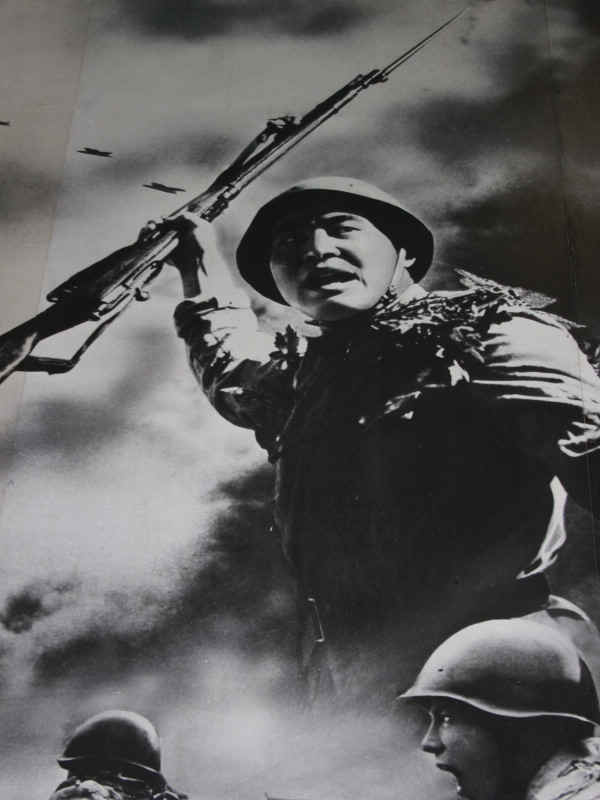
Late
20th century
DPRK soldier pointing to the DMZ
Main article: Korean Demilitarized
Zone
The relative peace between the south
and the north was punctuated by border skirmishes and
assassination attempts. The North failed in several
assassination attempts on South Korean leaders, most
notably in 1968, 1974 and the Rangoon bombing in 1983;
tunnels were frequently found under the DMZ and war nearly
broke out over the Axe Murder Incident at Panmunjeom in
1976. In 1973, extremely secret, high-level contacts began
to be conducted through the offices of the Red Cross, but
ended after the Panmunjeom incident with little progress
having been made and the idea that the two Koreas would
join international organisations separately.
In the late 1990s, with the South
having transitioned to democracy, the success of the
Nordpolitik policy, and power in the North having been
taken up by Kim Il-sung's son Kim Jong-il, the two nations
began to engage publicly for the first time, with the
South declaring its Sunshine Policy.
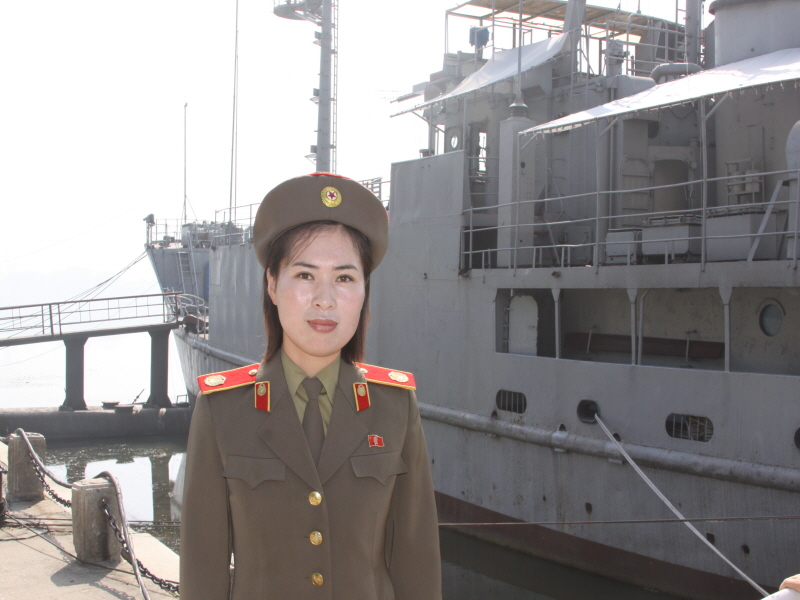
USS PUEBLO 1968
21st
century
In 2002, United States president
George W. Bush labeled North Korea part of an "axis
of evil" and an "outpost of tyranny". The
highest-level contact the government has had with the
United States was with U.S. Secretary of State Madeleine
Albright, who made a visit to Pyongyang in 2000, but the
two countries do not have formal diplomatic relations. By
2006, approximately 37,000 American soldiers remained in
South Korea, although by June 2009 this number had fallen
to around 30,000. Kim Jong-il has privately stated his
acceptance of U.S. troops on the peninsula, even after a
possible reunification.Publicly, North Korea strongly
demands the removal of American troops from Korea.
On June 13, 2009, the Associated
Press reported that in response to new UN sanctions, North
Korea declared it would progress with its uranium
enrichment program. This marked the first time the DPRK
has publicly acknowledged that it is conducting a uranium
enrichment program. In August 2009, former US president
Bill Clinton met with Kim Jong-il to secure the release of
2 US journalists, who had been sentenced for entering the
country illegally.
|
Note:
After the Korean War, the Korean Peninsula was
divided into two separate countries. Although
both countries share a 5,000 year history together,
they've been separated from each other for the last
50 years. Therefore, the historical and
cultural information about North Korea is similar to
that of South Korea.
Korea's
History
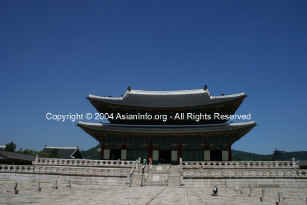
|
CHOSON
DYNASTIES
|
|
Modern History
|
|
|
|
|






